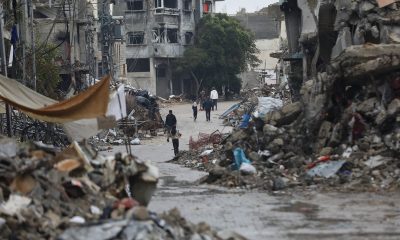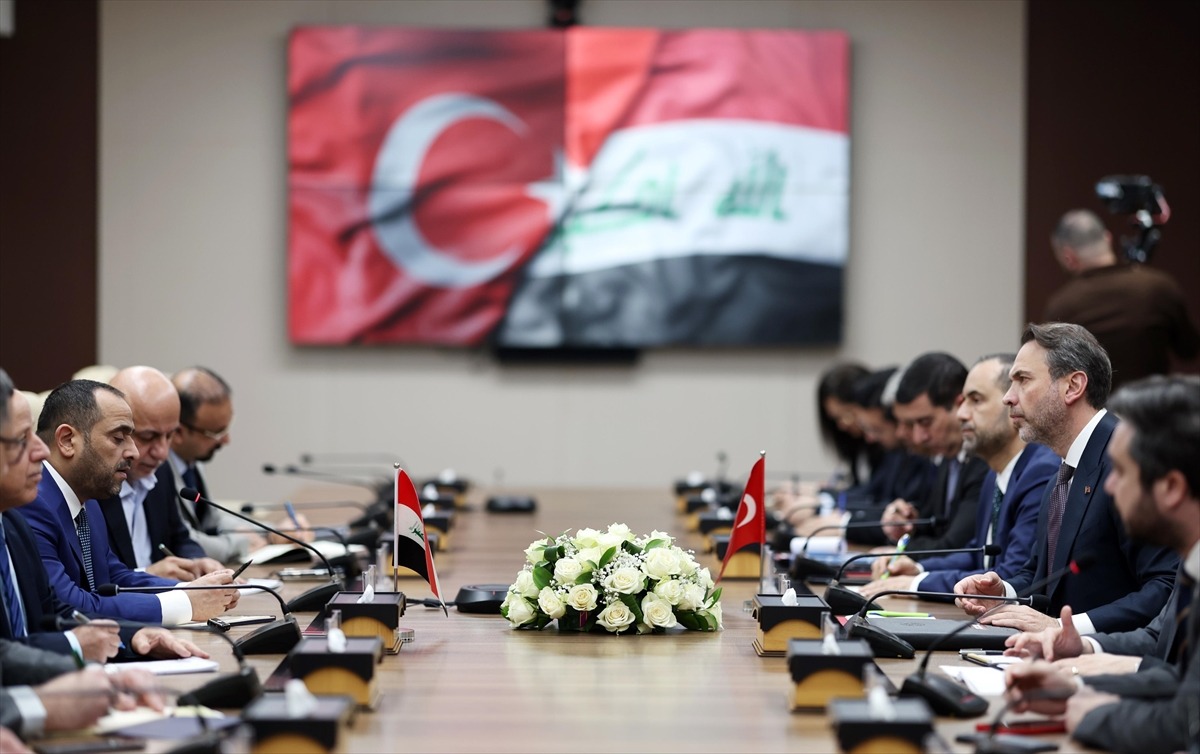Ahmed Shara, the leader of Hayat Tahrir al-Sham (HTS) administration in Syria, signed a declaration outlining the basic provisions of the interim constitution. The de facto administration in northern Syria, led by the Syrian Democratic Forces (SDG) which signed an agreement with HTS earlier this week, rejected the articles in the draft constitution, stating that they are “identical to the laws on which the Ba’ath regime is based.”
In a statement made on behalf of the de facto administration, which calls itself the “Autonomous Administration of North and East Syria” under the leadership of the SDG, it was stated, “Months after the fall of the Ba’ath regime and despite the joy of the Syrian people who rebelled against this regime and its oppressive practices, a ‘Draft Constitution’ declaration was published in Damascus.”
The statement claimed that the articles in the draft constitution are “identical to the laws on which the Ba’ath regime is based” and are “far from the reality and diversity of Syria.”
It was stated that the draft constitution excludes the main components of Syria’s national structure, including Kurds, Arabs, Assyrians, and other ethnic and religious groups, and that they reject and condemn the draft in its current form.
“This so-called constitutional framework does not reflect the demands of the Syrian people and its various communities,” the statement said. “The Syrian people revolted against such practices, and a return to this outdated approach will further deepen the nation’s wounds.”
The statement continued: “The correct constitution that should be in place is one prepared and agreed upon by all communities. We hope that some exclusive, narrow-minded views and thoughts do not take us back to square one. Only in this way can it serve as the foundation for a sustainable democratic future in Syria.”
An agreement was reached between the HTS administration and the Syrian Democratic Forces (SDG) on Monday, March 10. The agreement, signed between Ahmed Shara, the leader of the HTS administration, and Mazlum Abdi, the leader of the SDG, envisioned the integration of the SDG into Syrian state institutions.
Yesterday, three days after the agreement with the SDG, Shara signed a 53-article declaration outlining the basic provisions of the interim constitution. According to the declaration, the constitution includes the article, “The religion of the President is Islam, and Islamic law (fiqh) is the main source of legislation.”
The constitution, which envisages a five-year transition period, grants Shara, who is declared the “interim President,” executive power, the authority to appoint one-third of the legislative body, and the power to appoint judges to the constitutional court. Shara will also have the power to declare a state of emergency. Additionally, all political party activities in the country are suspended until the political parties law comes into effect.
According to Anadolu Agency, the highlights of the interim constitutional declaration are as follows:
– Article 1: The Syrian Arab Republic is a fully independent and sovereign state. Its geographical and political unity is indivisible, and no part of it can be relinquished.
– Article 2: The religion of the President is Islam, and Islamic law (fiqh) is the main source of legislation. Freedom of belief is guaranteed. The state respects all heavenly religions and guarantees freedom of worship. However, this freedom must not violate public order.
– Article 6: All citizens have equal rights and obligations before the law. Discrimination based on race, religion, gender, or lineage is prohibited.
– Article 7: The personal status of religious communities is protected and applied in accordance with their beliefs and Sharia. It is regulated within the framework of existing laws.
– Article 8: The state regulates the national economy based on social justice, free competition, and the prevention of monopolies. It supports production sectors, encourages investment, and protects investors to strengthen sustainable development.
– Article 13: The state guarantees freedom of expression, thought, press, publication, and media. These rights are regulated by law to protect public order and respect the rights of others.
– Article 14: The state recognizes the right to political participation and the freedom to form parties based on national foundations. A commission will be formed to prepare the party law, and party activities will be suspended until this law comes into effect.
– Article 15: The state commits to protecting human rights and fundamental freedoms in accordance with international conventions and humanitarian norms.
– Article 16: The state protects the family as the foundation of society and commits to supporting motherhood and childhood.
– Article 17: The state commits to protecting the social status and active role of women and protecting them from all forms of violence and discrimination.
– Article 18: The state commits to protecting children from abuse and mistreatment and ensuring their access to education and health services.
– Article 20: The People’s Assembly is appointed by the President and performs legislative duties until a permanent constitution is adopted and new parliamentary elections are held.
– Article 27: The President is the head of state, the commander-in-chief of the armed forces, and the highest authority responsible for the administration of the country.
– Article 35: The judiciary is independent. Judges are bound only by law and their conscience.
– Article 36: No crime or punishment can be applied without a legal regulation. Everyone is presumed innocent until proven guilty. Extraordinary courts cannot be established.


 OPINION1 week ago
OPINION1 week ago
 DIPLOMACY1 week ago
DIPLOMACY1 week ago
 DIPLOMACY4 days ago
DIPLOMACY4 days ago
 ASIA1 week ago
ASIA1 week ago
 DIPLOMACY5 days ago
DIPLOMACY5 days ago
 MIDDLE EAST2 weeks ago
MIDDLE EAST2 weeks ago
 AMERICA2 weeks ago
AMERICA2 weeks ago
 AMERICA2 weeks ago
AMERICA2 weeks ago



















